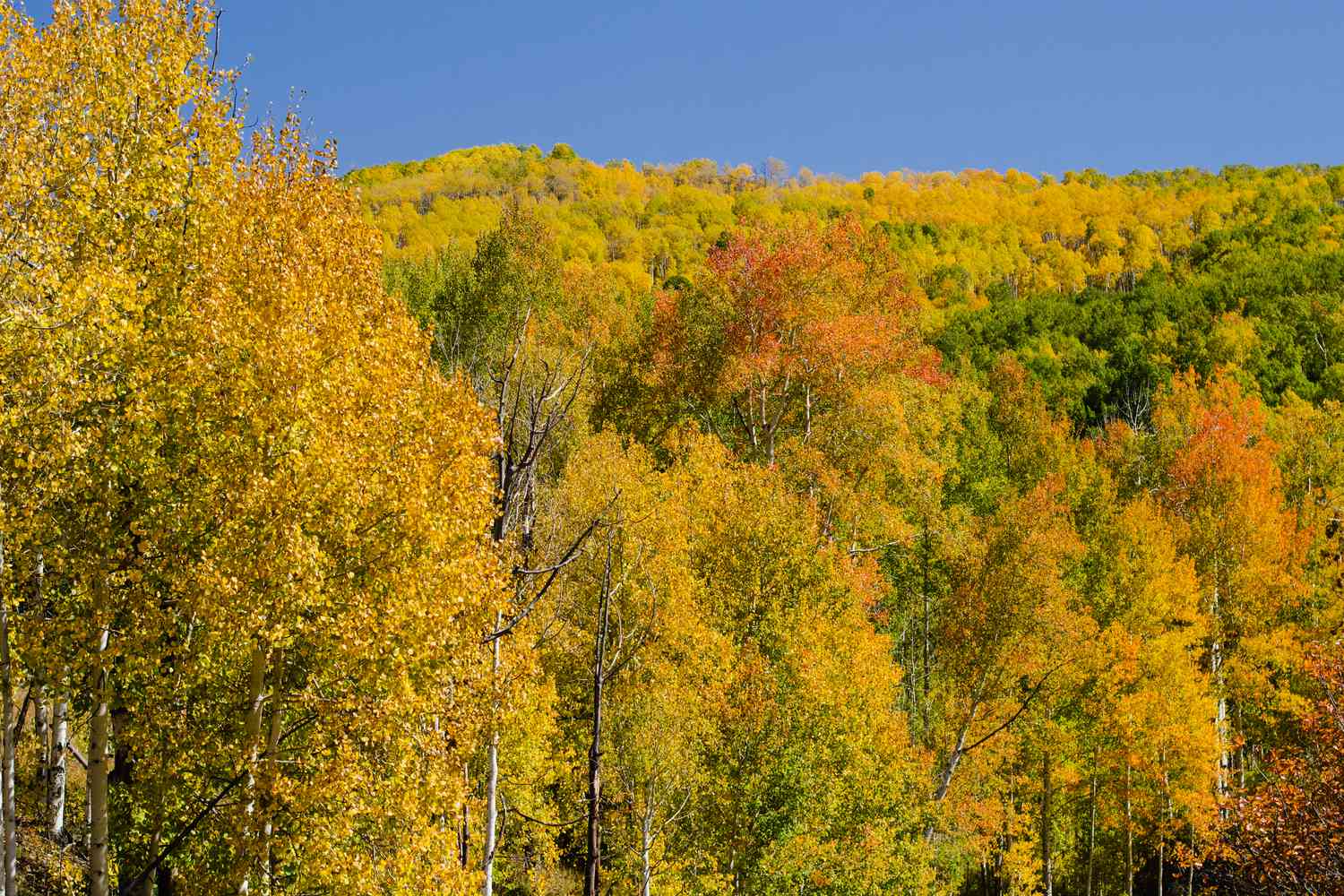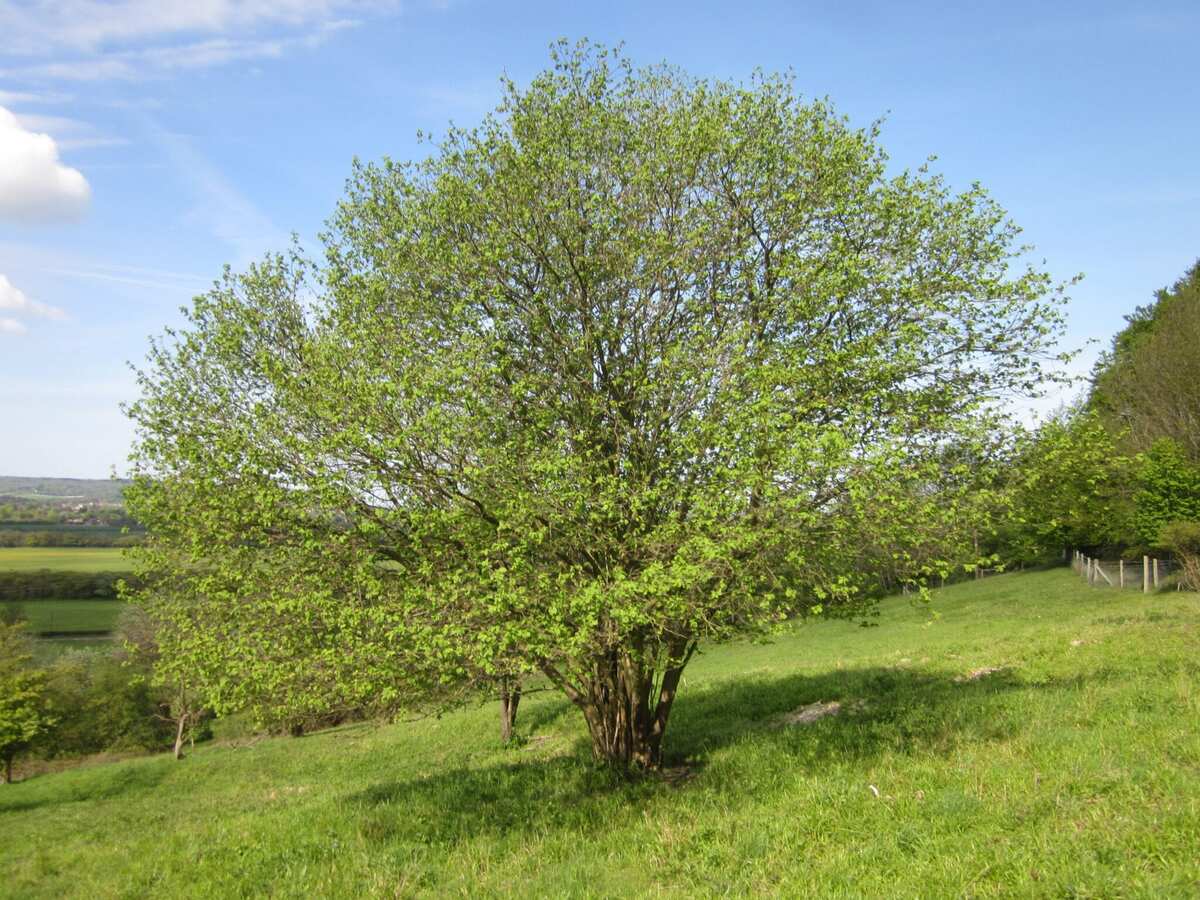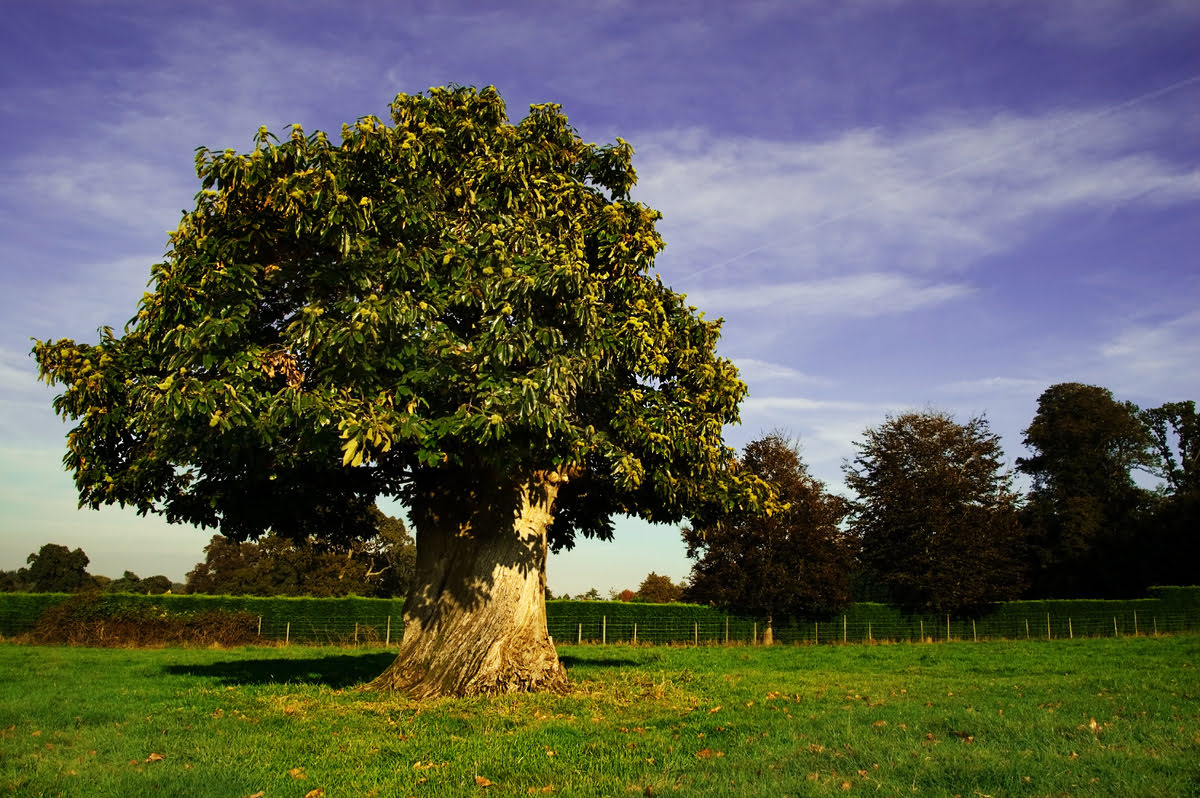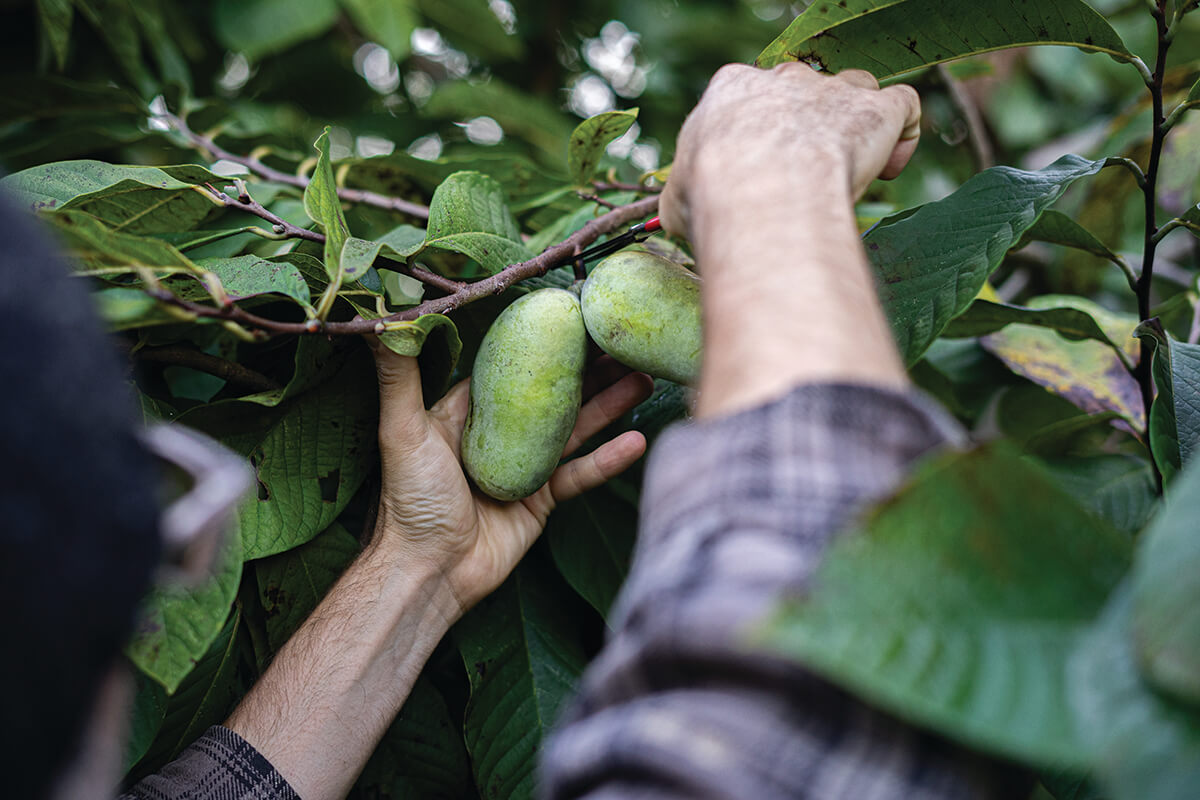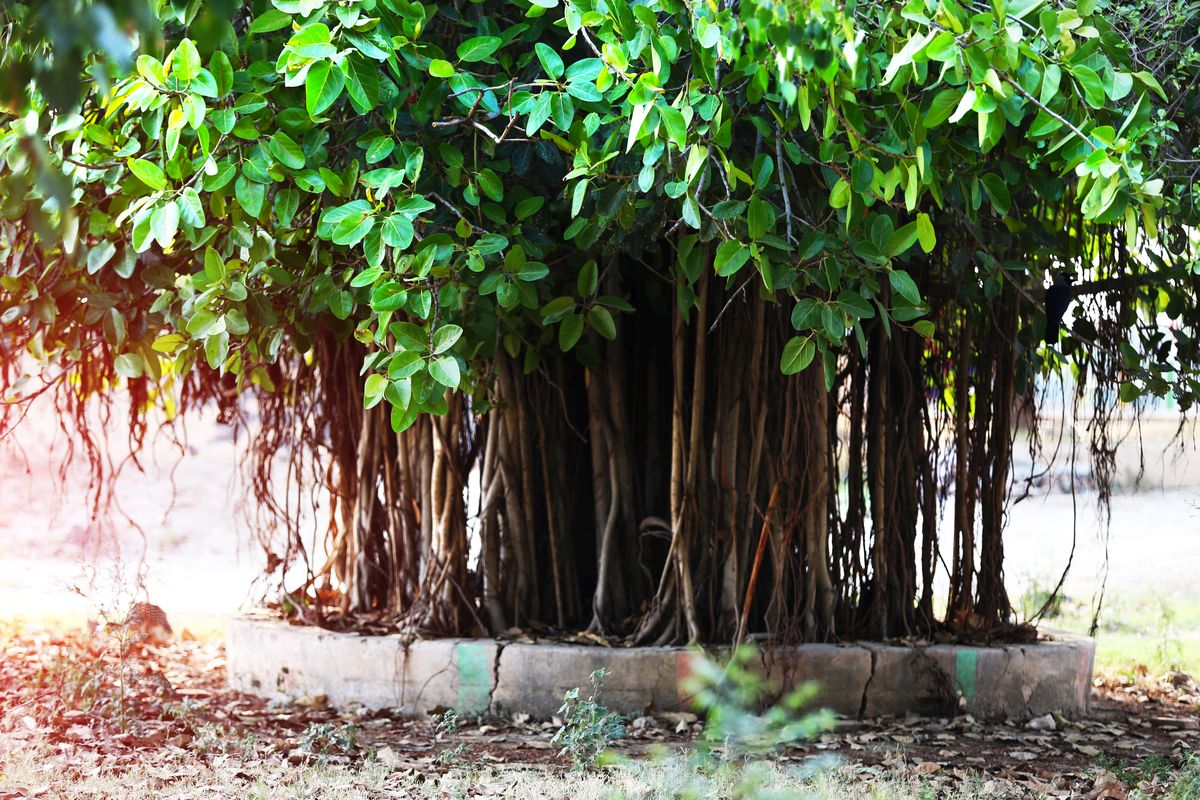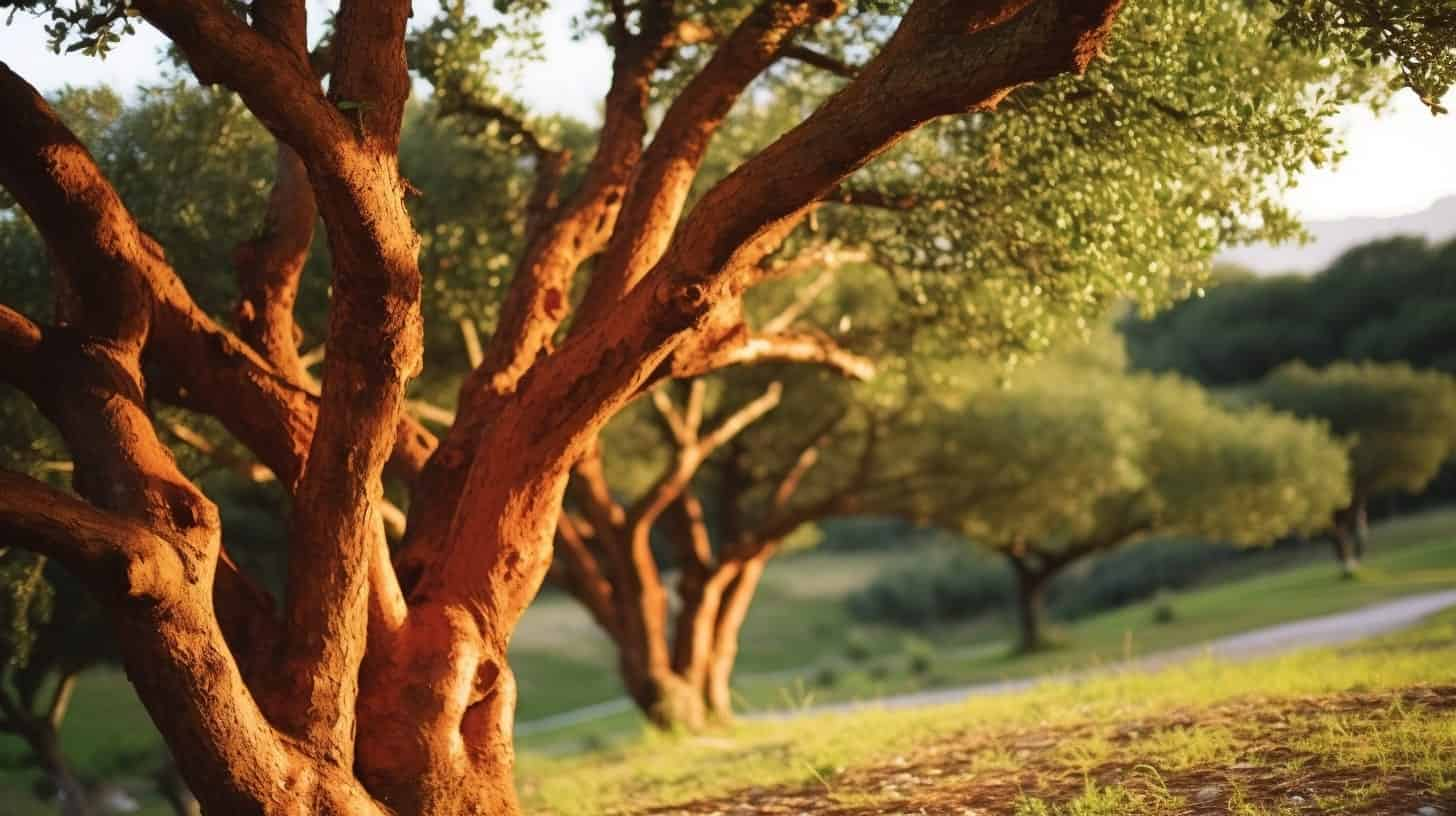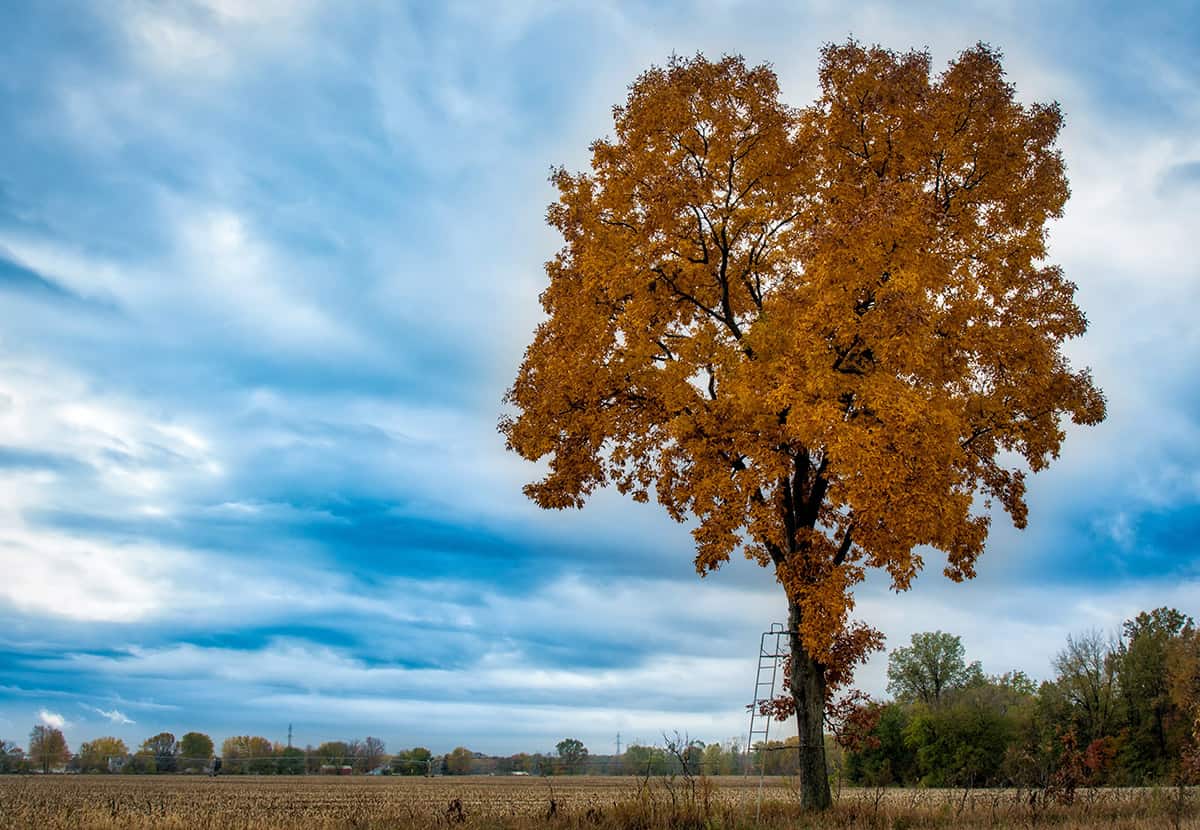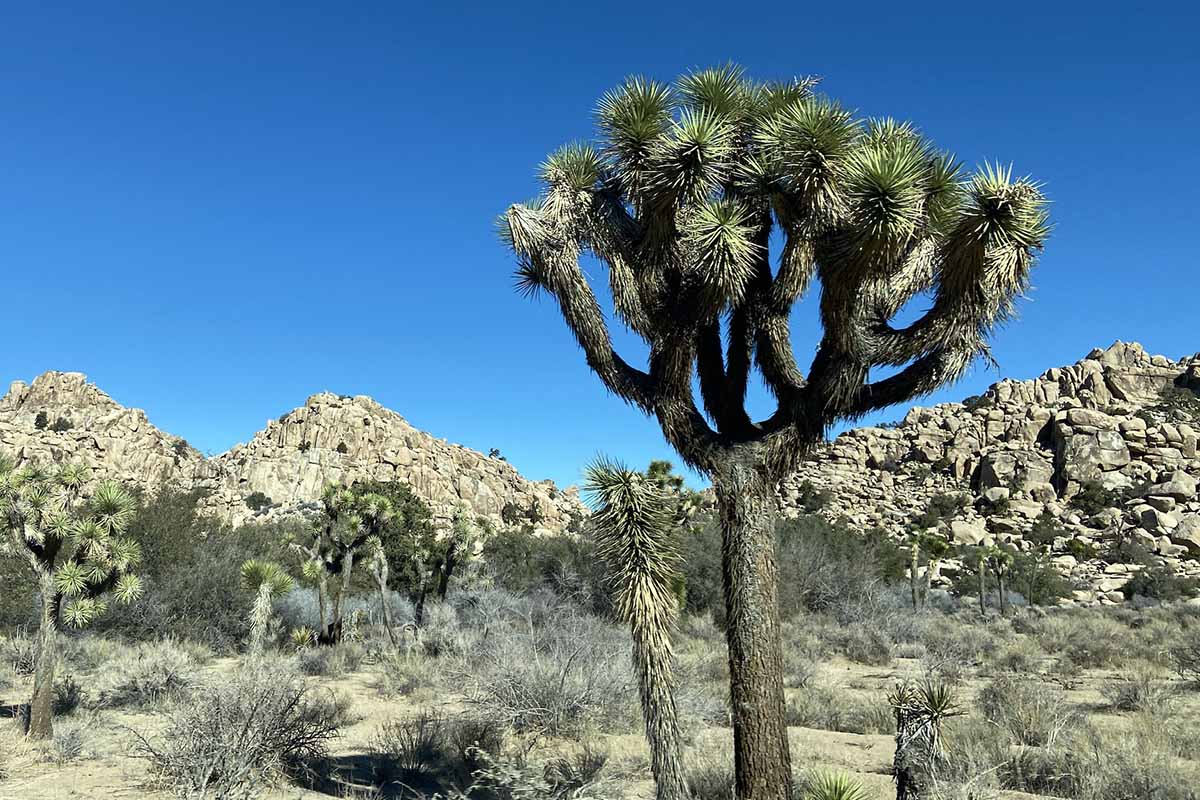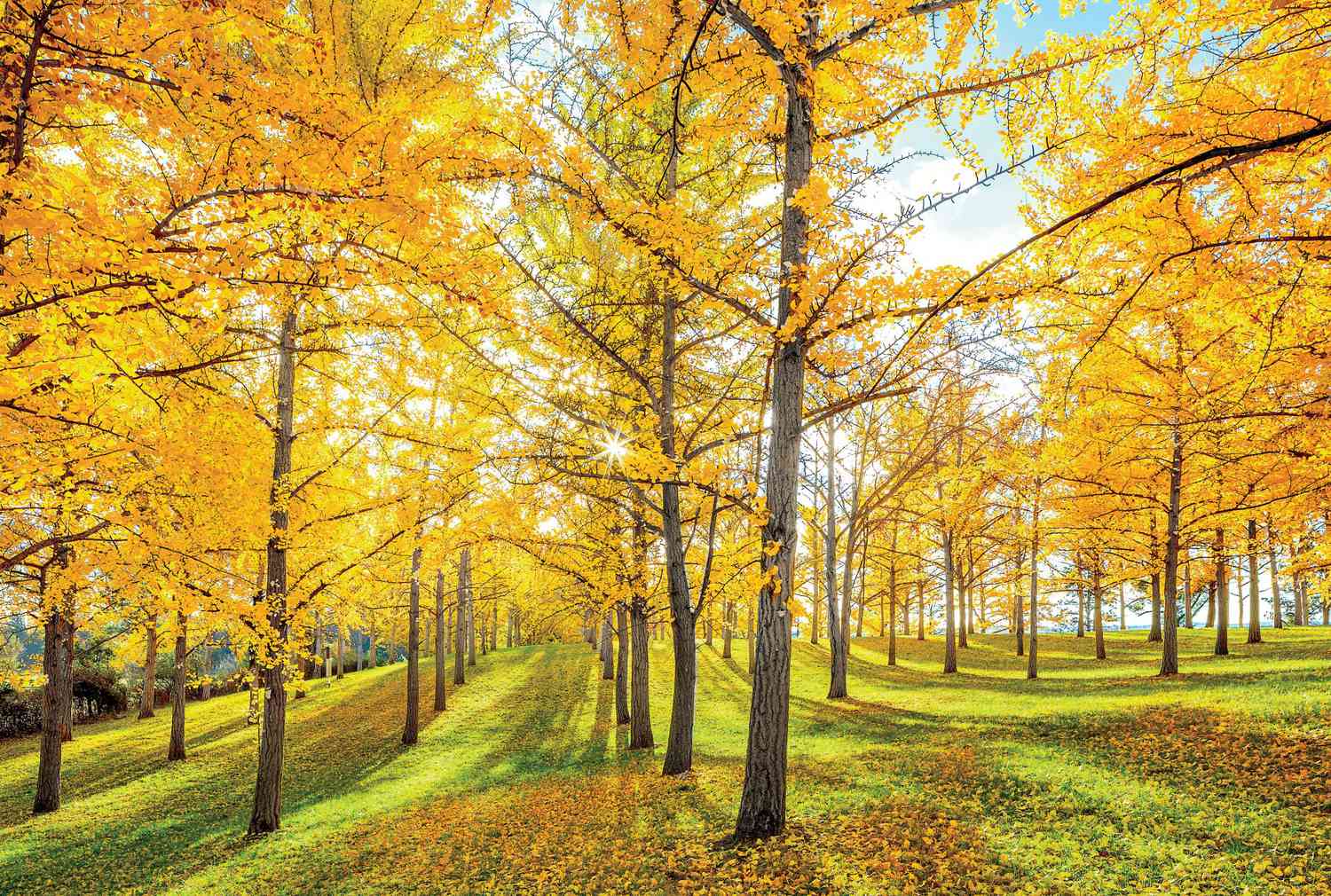Home>Gardening Techniques>Plant Care>Where Do Juniper Trees Grow
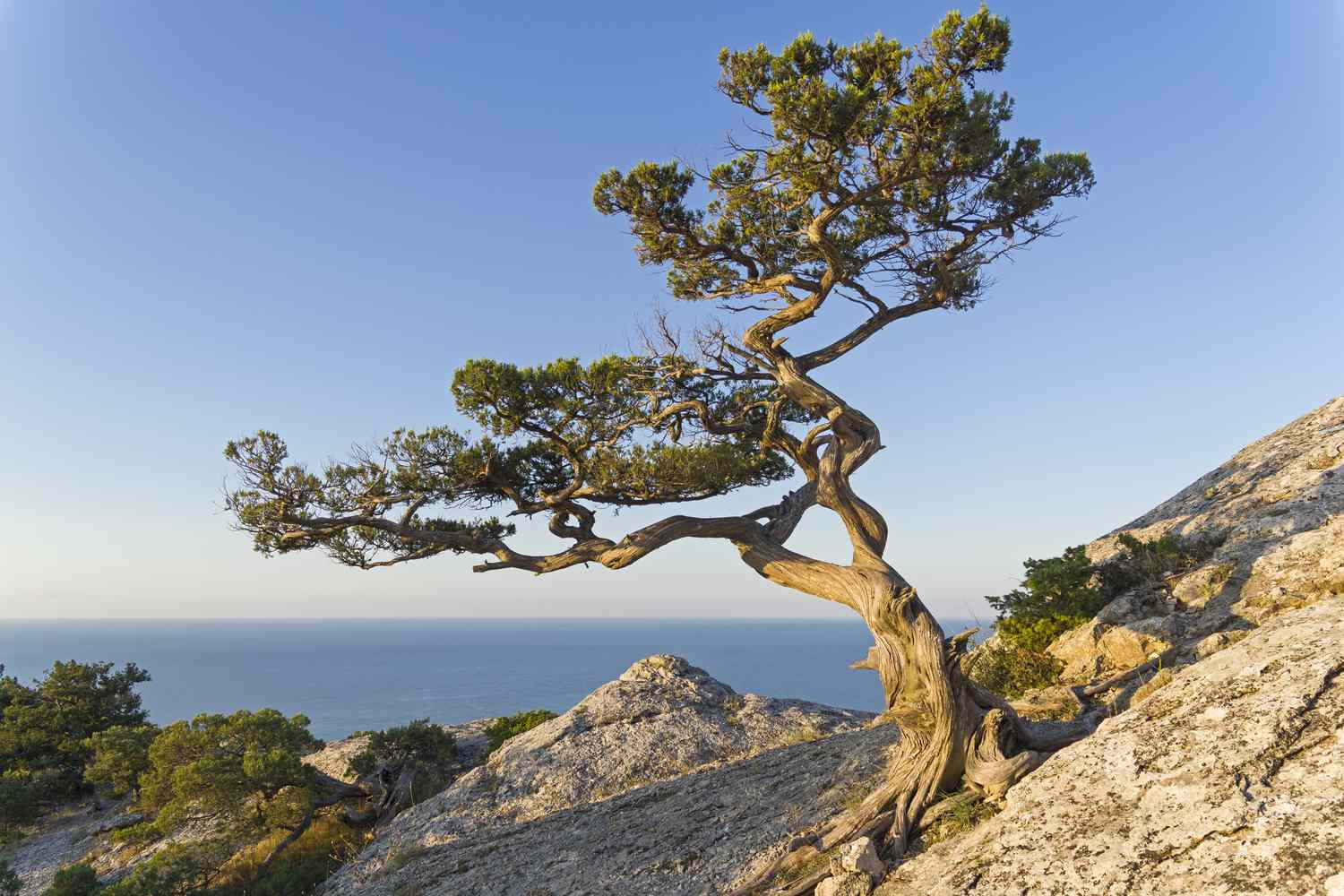

Plant Care
Where Do Juniper Trees Grow
Modified: January 22, 2024
Discover the ideal plant care for Juniper trees. Find out where Juniper trees grow and learn essential tips to nourish and maintain their thriving growth.
(Many of the links in this article redirect to a specific reviewed product. Your purchase of these products through affiliate links helps to generate commission for Chicagolandgardening.com, at no extra cost. Learn more)
Table of Contents
Introduction
Juniper trees, scientifically known as Juniperus, are a diverse group of coniferous trees and shrubs that belong to the cypress family. With their unique beauty and hardy nature, they have captured the attention and admiration of plant enthusiasts and horticulturists alike. Junipers are widely cherished for their evergreen foliage, intricate branching patterns, and aromatic wood.
These fascinating trees have a rich history and play a significant role in various ecosystems. From their climate requirements to their adaptability and ecological significance, understanding the growth and distribution of juniper trees is essential for plant care enthusiasts and conservationists.
Whether you’re a gardening novice or an experienced horticulturist, learning about the preferred habitats, geographical distribution, and various human uses of juniper trees can help you appreciate and care for these remarkable plants. In this article, we will delve into the fascinating world of juniper trees and explore their growth patterns, ecological importance, and much more.
Let’s embark on a journey through the juniper forests and discover the unique characteristics and significance of these incredible trees.
Climate Requirements
Juniper trees have a wide range of climate tolerances, making them adaptable to various environmental conditions. However, it’s important to note that different species of junipers may have specific climate requirements. Generally, junipers thrive in temperate and arid regions, but some species can also survive in colder or more humid climates.
Junipers are known for their resilience and ability to endure drought-like conditions. They have deep root systems that allow them to access water from the soil efficiently. As a result, junipers can survive in areas with low rainfall or limited water availability.
These trees are also highly resistant to extreme temperatures. Some species, like the common juniper (Juniperus communis), can withstand harsh winter conditions, including freezing temperatures and heavy snowfall. Other species, such as the Mediterranean juniper (Juniperus phoenicea), are adapted to hot and dry climates, thriving in areas with high temperatures and minimal rainfall.
Additionally, junipers prefer well-drained soil that is not overly fertile. Sandy or rocky soils are ideal for these trees, as they provide proper drainage and prevent the roots from becoming waterlogged. However, many juniper species can adapt to different soil types, including loamy or clay soils, as long as they are not prone to waterlogging.
While junipers are known for their ability to tolerate drought, they still benefit from occasional watering, especially during prolonged dry periods. New plantings or younger juniper trees may require more frequent watering to establish their root systems.
Overall, juniper trees are resilient and adaptable, making them suitable for a wide range of climates. However, it’s essential to consider the specific climate requirements of the juniper species you wish to cultivate to ensure optimal growth and vitality.
Geographic Distribution
Juniper trees have a widespread geographic distribution and can be found in various regions around the world. They are native to both the Northern and Southern Hemispheres, with different species occupying distinct habitats.
One of the most well-known regions for juniper trees is the Mediterranean basin. Here, several juniper species, including the Mediterranean juniper (Juniperus phoenicea) and the Phoenician juniper (Juniperus turbinata), thrive in the Mediterranean climate characterized by hot, dry summers and mild, wet winters.
Junipers are also prevalent in North America, with species like the eastern red cedar (Juniperus virginiana) and the Utah juniper (Juniperus osteosperma) found across various states. The Rocky Mountains and the Great Basin region are particularly rich in juniper populations.
Asia is home to several juniper species as well. In the Himalayan region, the Himalayan juniper (Juniperus indica) and the Chinese juniper (Juniperus chinensis) can be found growing in mountainous areas with diverse climatic conditions.
Other regions where juniper trees are distributed include Africa, where the African juniper (Juniperus procera) is found, and Europe, where the common juniper (Juniperus communis) is widespread.
Interestingly, junipers have also been introduced and cultivated in various other parts of the world for their ornamental and practical uses. They can be seen in landscaped gardens, parks, and even as bonsai trees.
Overall, the geographic distribution of juniper trees is vast, with different species adapting to and thriving in diverse climates and landscapes. Their ability to grow in various regions is a testament to their hardiness and adaptability.
Native Habitats
Juniper trees have diverse native habitats, ranging from mountainsides to coastal regions and everything in between. Their ability to adapt to various environments has allowed them to establish themselves in a wide range of ecosystems worldwide.
In North America, the eastern red cedar (Juniperus virginiana) is native to the eastern United States and can be found in a variety of habitats, including fields, forests, and rocky slopes. It thrives in both dry and moist soils and is often seen in open areas such as old farmsteads and abandoned fields.
Another native juniper in North America is the Utah juniper (Juniperus osteosperma), which is well adapted to the arid conditions of the desert Southwest. It can withstand high temperatures, low precipitation, and nutrient-poor soils, making it a hardy species in its native habitat.
In Europe, the common juniper (Juniperus communis) is widely distributed, occurring in a variety of habitats such as heathlands, moorlands, and high-altitude mountain regions. It thrives in poor, acidic soils and can tolerate cold temperatures and strong winds.
The Mediterranean juniper (Juniperus phoenicea) is native to the Mediterranean region, including countries like Spain, Italy, and Greece. It can be found in coastal areas, rocky slopes, and even sand dunes. This species has adapted to the hot, dry climate and has the ability to withstand strong winds and salt spray from the sea.
In Asia, the Himalayan juniper (Juniperus indica) is native to the Himalayan region, where it grows in high-altitude areas, often above the tree line. It is commonly found in open meadows, rocky slopes, and along the edges of forests.
Each juniper species has its own specific native habitat, as they have evolved over time to thrive in certain environmental conditions. From rocky mountains to coastal plains, junipers can be found in a remarkable range of habitats, showcasing their adaptability to different ecosystems.
Adaptability
One of the remarkable features of juniper trees is their adaptability to various environmental conditions. They have evolved unique characteristics that allow them to thrive in diverse habitats and survive in challenging circumstances.
One key aspect of juniper adaptability is their ability to withstand drought. Juniper trees have developed deep root systems that enable them to access water from deep within the soil. This adaptation allows them to survive in arid and water-scarce regions where other tree species may struggle.
In addition to their drought tolerance, junipers have also developed mechanisms to cope with extreme temperatures. Some species, like the Utah juniper (Juniperus osteosperma), have thick bark that helps insulate the tree and protect it from extreme cold or heat. This adaptation allows junipers to thrive in climates that experience significant temperature fluctuations.
Another remarkable aspect of juniper adaptability is their ability to grow in various soil types. While they prefer well-drained soils, junipers have the capability to tolerate a range of soil textures, including sandy, rocky, loamy, and clayey soils. This versatility allows juniper trees to establish themselves in different ecosystems and adapt to the soil conditions present.
Junipers are also known for their resistance to pathogens and pests. They produce natural compounds, such as aromatic oils, that help deter insects and fungi, minimizing the risk of disease and infestation. This defensive mechanism contributes to their overall resilience and adaptability in various environments.
Furthermore, junipers can thrive in both full sun and partial shade, making them adaptable to different light conditions. While they typically prefer sunny locations, certain species can tolerate reduced sunlight and grow successfully under the canopy of taller trees.
Overall, juniper trees have evolved and adapted to thrive in diverse environments. Their ability to withstand drought, extreme temperatures, various soil types, and resist pathogens and pests showcases their remarkable adaptability and contributes to their widespread distribution around the world.
Ecological Significance
Juniper trees play a crucial role in various ecosystems, contributing to biodiversity and providing numerous ecological benefits to their surroundings.
One of the significant ecological roles of junipers is their ability to provide food and shelter for wildlife. The dense, evergreen foliage and berry-like cones of juniper trees serve as valuable food sources for a wide range of birds, including cedar waxwings, thrushes, and grouse. These trees also provide nesting sites and cover for small mammals and insects, helping to support biodiversity within their habitats.
Junipers also play a role in stabilizing soil and preventing erosion. Their extensive root systems help hold the soil in place, especially in areas with steep slopes or loose soils. This is particularly important in regions where erosion poses a threat to the ecosystem and surrounding communities.
In addition to soil stabilization, junipers contribute to water conservation and nutrient cycling. Their deep root systems can access water deep within the soil, reducing water loss through evaporation and enhancing water infiltration. This can help mitigate the effects of drought and preserve water resources in arid regions.
Furthermore, juniper trees have the ability to fix nitrogen from the atmosphere, enriching the soil with essential nutrients. This can have a positive impact on the fertility of the surrounding ecosystem and support the growth of other plant species.
Junipers also contribute to carbon sequestration, a process in which trees absorb and store carbon dioxide from the atmosphere. By capturing and storing carbon, junipers help mitigate climate change by reducing greenhouse gas concentrations and their impact on the environment.
Lastly, juniper trees have cultural and historical significance for many Indigenous communities and local populations. They have been used for various purposes, including traditional medicine, building materials, and spiritual ceremonies. Preserving juniper habitats is essential for maintaining cultural heritage and the traditional practices associated with these trees.
In summary, juniper trees have significant ecological significance. They contribute to biodiversity by providing food and shelter for wildlife, help stabilize soil and prevent erosion, conserve water, enhance nutrient cycling, sequester carbon, and hold cultural and historical value. Protecting and conserving juniper populations is vital for maintaining healthy ecosystems and preserving the interconnected balance of nature.
Human Uses
Juniper trees have been utilized by humans for various purposes throughout history. Their unique characteristics and beneficial properties have made them valuable in numerous domains.
One notable use of juniper is in the production of essential oils. Juniper essential oil is derived from the berries or needles of certain species and is known for its invigorating and therapeutic qualities. It is used in aromatherapy, skincare products, and as a flavoring agent in food and beverages.
Juniper wood is highly valued for its durability, strength, and natural resistance to decay. It has been used in the construction of furniture, carvings, fence posts, and even musical instruments. The aromatic properties of juniper wood have also made it a preferred choice for crafting unique items such as smudge sticks and incense.
Besides its practical uses, juniper berries have been utilized in culinary arts and herbal medicine. They have a distinctive flavor and are often used as a spice in various cuisines, particularly in the production of gin. Juniper berries also have medicinal properties and have been used to aid digestion, promote urinary health, and provide relief from rheumatism and arthritis.
Juniper trees have cultural significance and spiritual uses as well. They have been used in ceremonies and rituals by various Indigenous communities around the world for purification, protection, and spiritual guidance. In some cultures, juniper branches or smudge bundles are burned to cleanse and purify spaces.
Furthermore, juniper trees have aesthetic value and are popular choices for landscaping and ornamental purposes. Their unique foliage textures, colors, and branching patterns add visual interest and create focal points in gardens and parks. Juniper shrubs are often used for hedges, topiaries, and bonsai trees, showcasing their versatility and beauty in the world of horticulture.
It’s important to note that sustainable harvesting practices and conservation efforts are crucial to ensure the availability and longevity of juniper resources. Responsible use of juniper trees and their products is necessary to maintain their ecological, cultural, and economic relevance.
In summary, juniper trees have a wide range of uses for humans. From essential oils and woodworking to culinary and medicinal applications, juniper trees provide valuable resources that enhance our lives in various ways. They also hold cultural and aesthetic significance, adding beauty and spiritual value to our surroundings.
Threats and Conservation
Despite their adaptability and resilience, juniper trees face various threats that have contributed to population declines and habitat loss in certain regions. Understanding these threats and implementing conservation measures are crucial for the long-term survival of juniper species.
One significant threat to juniper trees is habitat degradation and fragmentation. Human activities such as urbanization, agriculture, and livestock grazing have resulted in the loss and fragmentation of natural habitats where junipers thrive. This disrupts their natural growth patterns, reduces genetic diversity, and limits their ability to disperse and establish new populations.
Invasive species pose another major threat to juniper tree populations. Invasive plants can outcompete native vegetation, alter ecological processes, and reduce habitat suitability for junipers. Additionally, certain invasive insects and pathogens can affect the health and survival of juniper trees, leading to declines in their populations.
Climate change is also impacting juniper trees. Rising temperatures, altered precipitation patterns, and increased frequency of extreme weather events pose challenges to their survival. Junipers may face increased drought stress, reduced water availability, and higher vulnerability to pests and diseases as a result of climate change.
Additionally, overharvesting for commercial purposes, particularly in the extraction of essential oils and timber, can contribute to population decline and habitat degradation if not managed sustainably. It is important to implement responsible harvesting practices and promote sustainable use of juniper resources to minimize negative impacts.
Conservation efforts for juniper trees focus on a range of strategies. Protecting and preserving natural habitats through habitat restoration, land conservation, and the establishment of protected areas can help safeguard juniper populations and their associated ecosystems.
Invasive species management is another crucial aspect of conservation. Implementing measures to control the spread and impact of invasive plants, insects, and diseases can protect juniper habitats and promote their regeneration.
In the face of climate change, it is essential to prioritize adaptive management strategies. This may include implementing irrigation systems, selecting climate-resilient juniper species for reforestation efforts, and monitoring shifts in the distribution and phenology of juniper populations.
Education and public awareness play a vital role in juniper tree conservation. Promoting the importance of these trees, their ecological significance, and the need for sustainable practices can foster appreciation and support for their protection.
Collaboration among researchers, conservation organizations, governments, and local communities is key to effectively conserve juniper trees. By working together, we can ensure the preservation of junipers for future generations to enjoy and benefit from their ecological, cultural, and economic value.
Conclusion
Juniper trees possess remarkable adaptability, ecological significance, and human uses. From their diverse climate requirements and geographic distribution to their ability to thrive in native habitats and contribute to biodiversity, juniper trees are an integral part of our natural world.
These resilient trees have adapted to various environmental conditions, including drought, extreme temperatures, and different soil types. Their deep root systems, resistance to pathogens, and ability to fix nitrogen make them valuable contributors to ecosystem health.
Juniper trees have been utilized by humans for centuries, providing essential oils, durable wood, culinary ingredients, and spiritual and cultural significance. They also add aesthetic value to landscapes and gardens.
However, juniper trees face threats such as habitat degradation, invasive species, climate change, and overharvesting. Conservation efforts play a crucial role in preserving juniper populations and ensuring their long-term survival. Strategies such as habitat restoration, invasive species management, and sustainable harvesting practices are vital for protecting these iconic trees.
Education and awareness are key in fostering appreciation for juniper trees and promoting sustainable practices. Collaboration between researchers, conservation organizations, governments, and local communities is essential to effectively conserve junipers.
In conclusion, juniper trees embody the resilience and adaptability of nature. Their growth patterns, ecological significance, and human uses make them important components of our natural and cultural heritage. By understanding and conserving these remarkable trees, we can protect their invaluable contributions to ecosystems and sustain their benefits for generations to come.
